When the ladies had their own baths at the western end of Manly Cove
These days the north-western corner of Manly Cove is dominated by an aquarium but 140 years ago it was the site of a swimming pool built specifically for women.
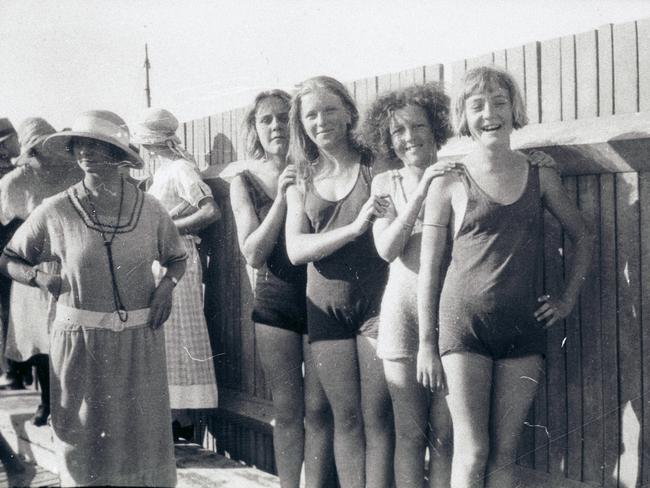
Manly
Don't miss out on the headlines from Manly. Followed categories will be added to My News.
These days the north-western corner of Manly Cove is dominated by an aquarium but 140 years ago it was the site of a swimming pool built specifically for women.
It wasn’t the first pool on the site and it was later replaced by a pool that was open to all and later still by the largest swimming pool in the Southern Hemisphere.
But sources from the past can be confusing – at least to modern readers – due to the difference between the use of the word ‘baths’ as objects in a bathroom and also as another word for swimming pool.
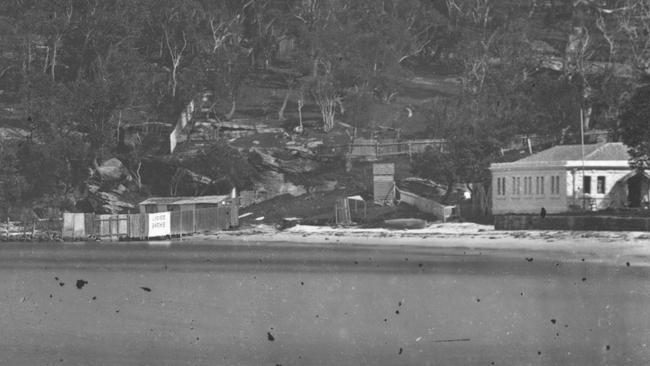
Manly’s founder, Henry Gilbert Smith, built the first baths at the western end of Manly Cove in 1856-57, following the construction of the wharf in October 1855 and the Pier Hotel across the road from the wharf in December 1855.
And he did so without asking anyone’s permission.
Construction of the baths began in late 1856, and in January 1857 Smith advertised for an engineer to build a small steam engine and piping to supply water to the baths.
A creek emptied into the north-western end of Manly Cove, so both salt and fresh water were available.
The baths were completed in mid-1857 and in late 1858 Smith advertised the services that were available at the “warm and cold water sea bathing establishment”.
“No expense has been spared on the buildings, furniture for the 12 bathrooms, firing of steam engine and boilers, to place these baths on a par with those at the English watering places,” said the advertisement.
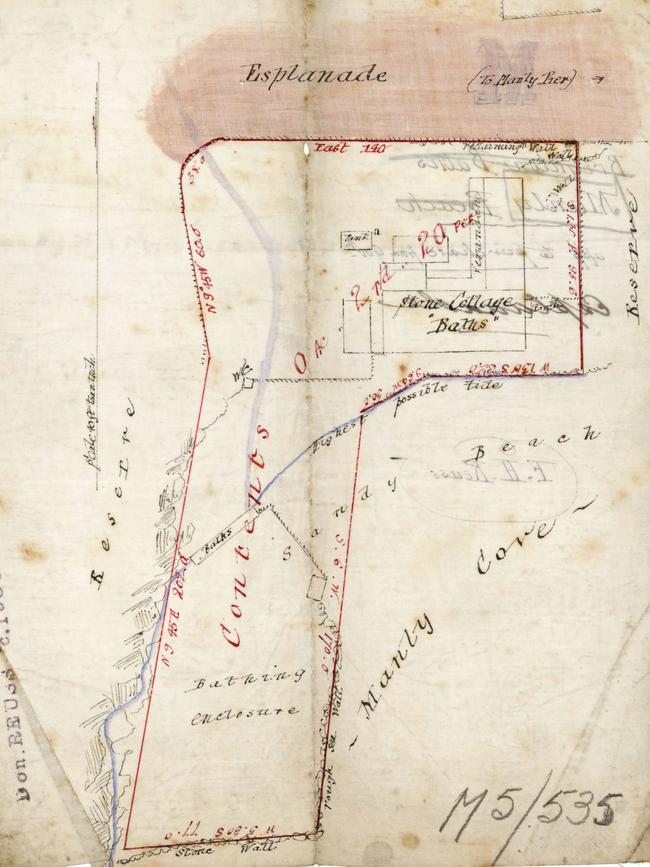
Behind the baths was built a substantial sandstone structure that served as a residence for the manager of the baths and also accommodated some of the facilities being offered.
By May 1859, the baths were being conducted by a Mr Guest and were described in the press as “perfectly safe, secret and commodious, comprising cold, warm, vapour, shower and others, fitted with every requisite and in a style of extraordinary luxury combined with economy, principally with a view to their use by invalids”.
By September 1859, the baths were being referred to as the Brighton Baths, when hot, cold, shower, douche, jet de rose and hot air baths could be had at any hour of the day or night, while between 10am and 5pm on Wednesdays and Saturdays customers could avail themselves of vapour baths, which were described as being “the most effectual cure for colds, rheumatism and cutaneous diseases”.
By 1860 the Brighton Baths were being run by Elizabeth Cadman, the widow of John Cadman, of Cadman’s Cottage fame.
John Cadman was transported to Sydney for stealing a horse and arrived in 1798, after which he became coxswain of a government boat, was promoted to superintendent of government boats and retired in 1845, after which he vacated his cottage at The Rocks and returned to his former trade as a publican.
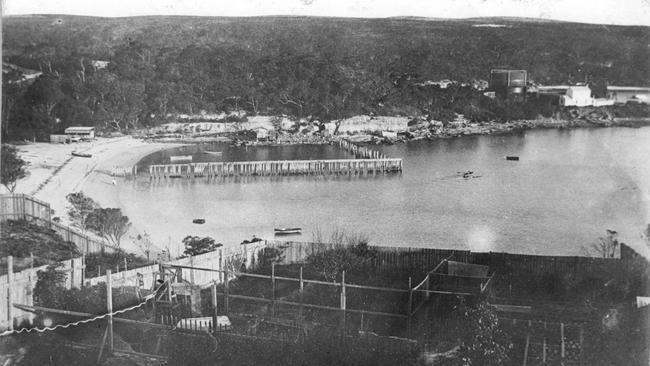
John’s widow Elizabeth moved to Manly in 1859 and she and her daughter Phoebe Sargent ran the Brighton Baths.
Elizabeth Cadman died in May 1861, after which the baths may have been run for a short time by her daughter, Mrs Phoebe Sargent, who conducted guesthouses in Manly for many years.
The Brighton Baths were advertised to let in October 1862 and were reopened by James Melville and his wife, who appear to have expanded their operation because they advertised that a portion of the structure behind the baths had been “fitted up for families and single gentlemen” as apartments while there was also “an apartment for invalids”.
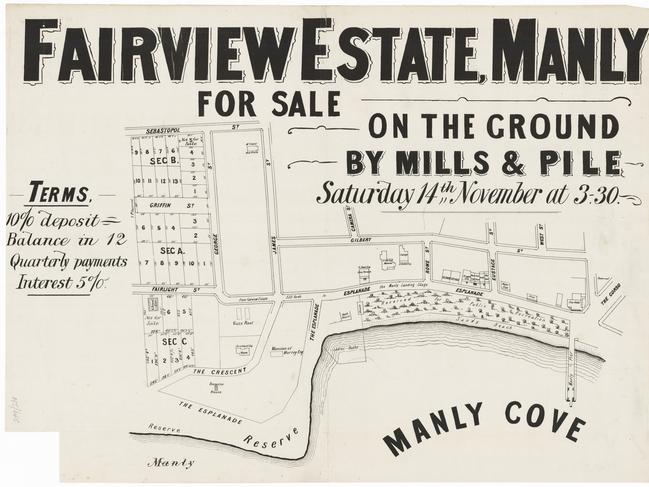
By October 1863 the establishment was advertised as being to let after it had undergone extensive alterations and now included five bathrooms, two shower baths and dressing rooms that were separate from the main building, which was now well-suited for use as a boarding house or private apartments.
“If an eligible tenant offers, the proprietor will build in addition four bathing-machines similar to those used at the English watering-places,” read the advertisement.
By October 1864 the Brighton Baths were being run by Manly’s schoolteacher, Henry Lee, and his wife and by December that year the baths were advertised as having undergone recent repairs and now offered first-class board and accommodation.
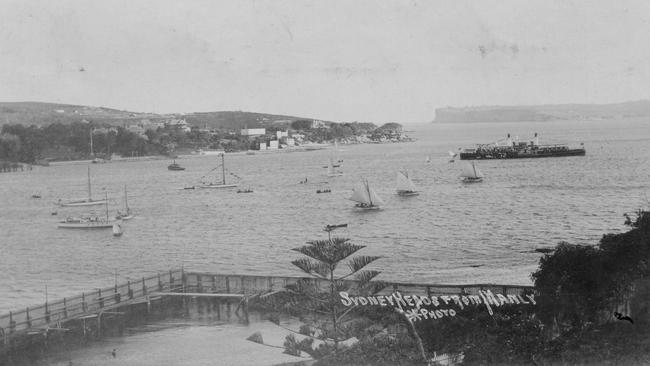
But it’s hard to know how much success Lee and his wife were having – in February 1865 the well-furnished seven-room house at Brighton Baths was advertised as being to let but in the same month the baths were being advertised by Lee as having “more than ordinary facilities for the recovery of health” that included warm and cold baths, dry, airy rooms and with the most experienced attention, along with the presence of a piano.
In March 1865 Lee again advertised the seven-room house being for let but later the same month advertised that Brighton Baths “has opened as a first-class boarding house”.
By December 1866, the Brighton Baths were being run by Mrs Ellen Harrison, who advertised accommodation for “invalids or families”.
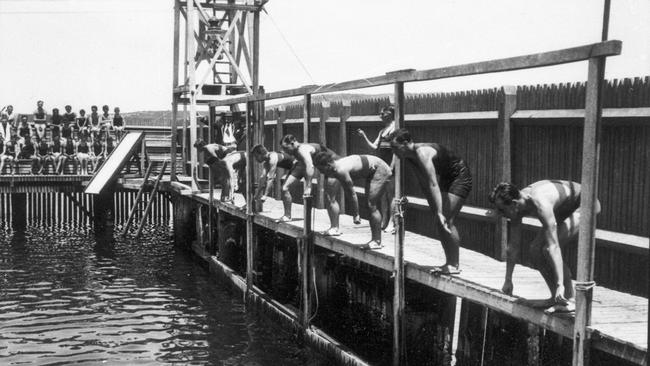
Mrs Harrison was still there in 1873 and vacant apartments at Brighton Baths continued to be advertised in 1874 and 1875, while a J. Gibbs was there in 1877 – the year Manly Council came into being.
But the lessees of the Brighton Baths had a foretaste of what was in store in 1878 – in January that year Manly mayor Thomas Rowe and two aldermen met Lands Minister James Farnell to ask for the government’s help to build two baths at Manly – one for men and one for women – at opposite ends of Manly Cove.
The council wanted to build the men’s baths at the eastern end of Manly Cove but wealthy landowners at that end lobbied for the baths to be built further away at Little Manly Cove instead.
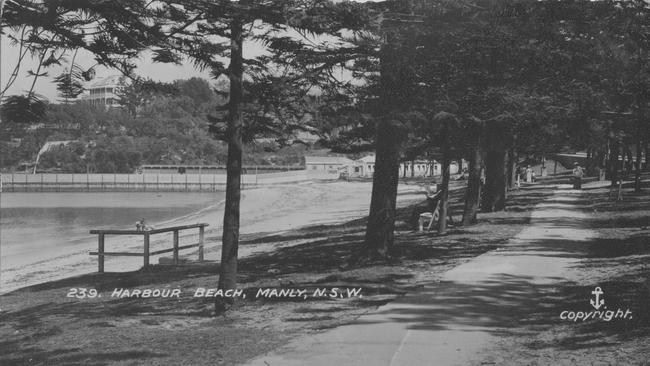
Once the gent’s baths at Little Manly were close to completion, in May 1880 Manly Council resolved to push ahead with the construction of baths for ladies at the western end of Manly Cove.
The council said the existing baths there were inadequate but that the site was desirable for the proposed new ladies’ baths.
In November 1879, a T. Fox, announced that, having leased and refitted the Brighton Baths, furnished rooms were now available for rent and swimming lessons were available for ladies, although it is likely that it was the accommodation that had been refitted, not the baths, which were by now in poor condition.
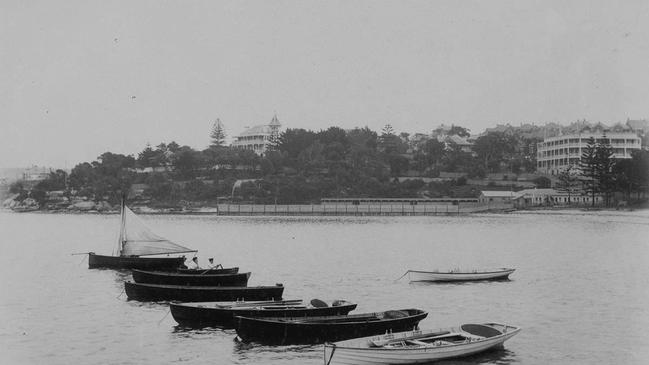
Fox remained the lessee of the Brighton Baths until 1880 and possibly through 1881 and into 1882.
But Fox was living on borrowed time – in May 1880 Manly Council voted to have plans prepared for the construction of new baths at the western end of Manly Cove and to call for competitive designs, although nothing came of the council’s moves.
But in June 1882, furniture, equipment, beds, kitchen utensils, ovens and other items at the Brighton Baths were put to auction on the site.
It was the beginning of the end for the Brighton Baths.
In March 1883, Manly Council voted to seek tenders to build new baths at the western end of Manly Cove, the successful tenderer to be given a 21-year lease of the baths for a peppercorn rent.
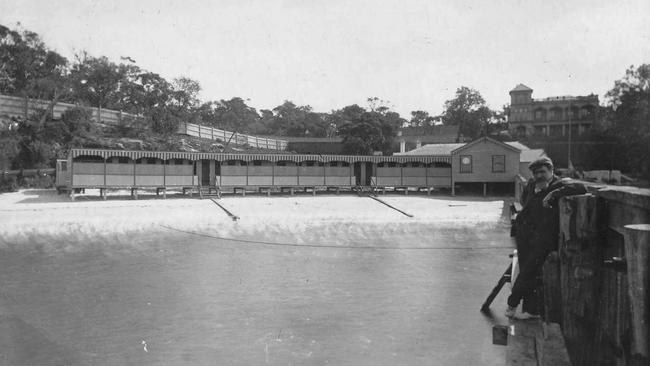
In April 1884, another auction was held at Brighton Baths of dining-room, bedroom and drawing-room furniture, carpets, kitchen equipment, a piano and a dinghy.
The advertisement for the sale was the last time the term Brighton Baths was ever used.
By August 1884, Manly Council had accepted the design for a new ladies baths conceived by architect J.H. Rock ahead of three other designs.
In December 1884, Henry Gilbert Smith agreed to sell the sandstone building behind the old baths to the council for £500, even though he had built it without anyone’s permission.
Construction of the new baths at the western end of Manly Cove began in early 1885 and tenders were then sought for the construction of the dressing rooms and waiting rooms.
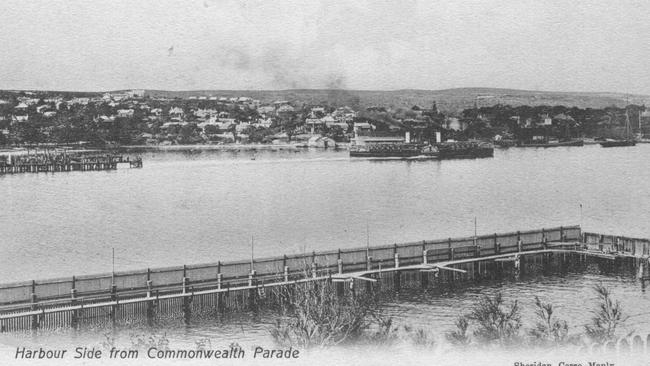
The new ladies’ baths were completed in late 1885 and Manly Council sought tenders for the lease of the baths and of the sandstone building the council had purchased from Smith and refitted.
As well as the new pool, which was much larger than the old one, other improvements included the construction of 25 dressing rooms and of a windmill to raise both salt and fresh water.
The successful tenderer was Charles Kindred, who took a 10-year lease on the baths in January 1886.
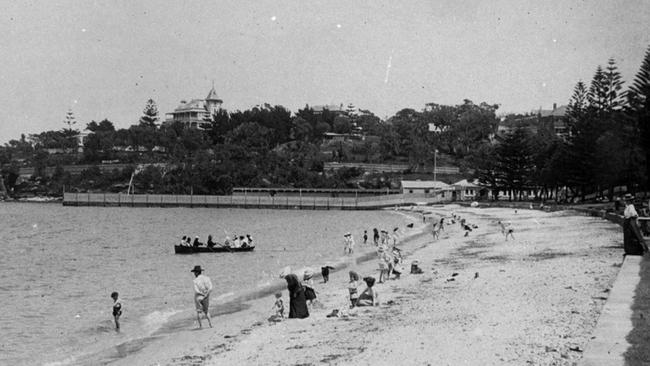
In November 1886, the Lands Department agreed to lease the site of the ladies’ baths to Manly Council on payment of a deposit of one guinea (£1.1.0) and an annual rent of £10.
Despite having been granted a 10-year lease of the ladies’ baths in January 1886, Kindred surrendered the lease in July 1889 and a Mr J.A. Fergusson took his place.
Fergusson undertook to pay the council £75, £80, and £85 for the first, second, and third years of the lease, respectively, but by July 1897 the lease was held by Leon Ferrett.
By October 1897, the ladies’ baths had been extended by 12m, which not only created a larger space for swimming but meant that the water at the outermost part of the pool was at least 3m deep at high tide and thus safe for diving.
The extension of the pool and the construction of additional dressing boxes cost the council about £255.
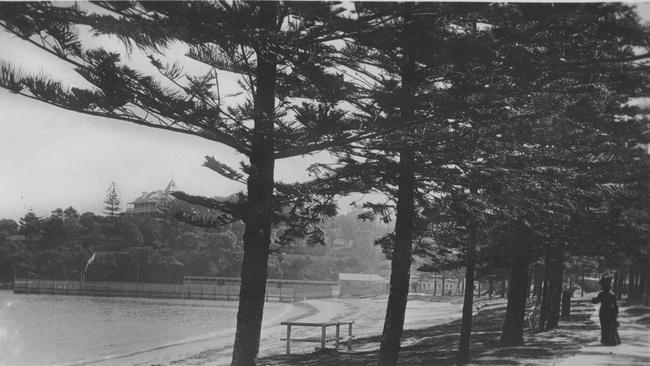
In April 1901, Ferrett reported to Manly Council that his takings for the financial year had been £360, which was a good return for the council, although some of that money had to be spent on repairs after the ladies’ baths were damaged during a storm in July that year and had to be closed for business until the repairs could be effected.
Leon Ferrett remained the lessee of the ladies’ baths until at least 1917, by which time he was paying rent of £9.10.0 a month.
In the meantime, a quiet revolution had taken place – the advent of mixed bathing – of both sexes using swimming pools at the same time.
The change had first occurred in Manly in the gent’s baths at the eastern end of Manly Cove in February 1898 and mixed bathing events, also known as Continentals, were held there regularly in succeeding years.
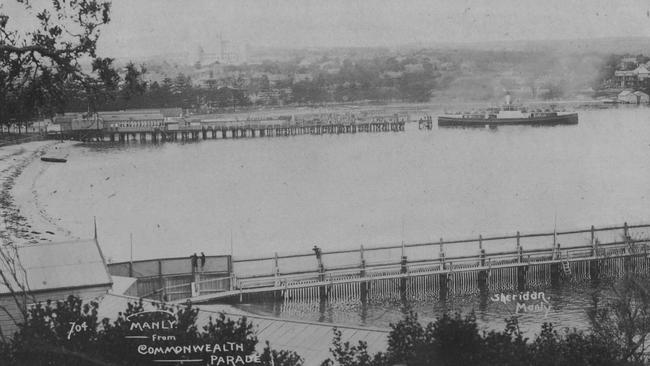
The gent’s baths at the eastern end of Manly Cove were built in 1892 to replace the ageing gent’s baths at Little Manly.
In late 1915 Manly Council agreed that dual bathing would be allowed in the gent’s baths between 7pm and 10pm, Monday to Friday, but only for bona fide residents of Manly, and in early 1916 it voted to allow mixed bathing in the gent’s baths between 9.30am and 1pm daily, and in ladies’ baths between 5am and 9.30am daily.
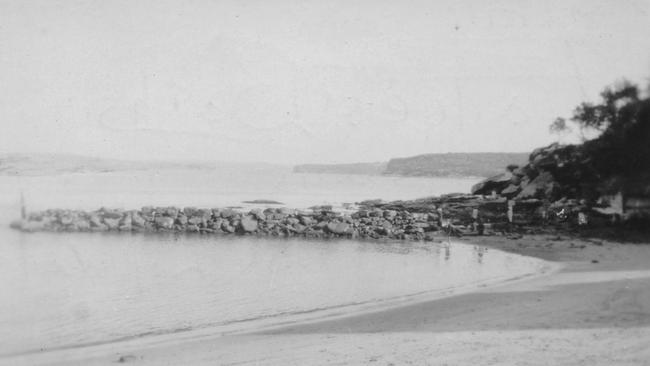
But by 1917 the condition of the ladies’ baths was deteriorating and the council had to debate the value of spending a lot of money to repair them, especially as surf bathing was taking an increasing hold on the attention of bathers of both sexes and as both sexes now had full access to what had formerly been called the gent’s baths at the eastern end of Manly.
Some aldermen believed the best option would be to demolish the ladies’ baths to create a beauty spot at that end of Manly Cove.
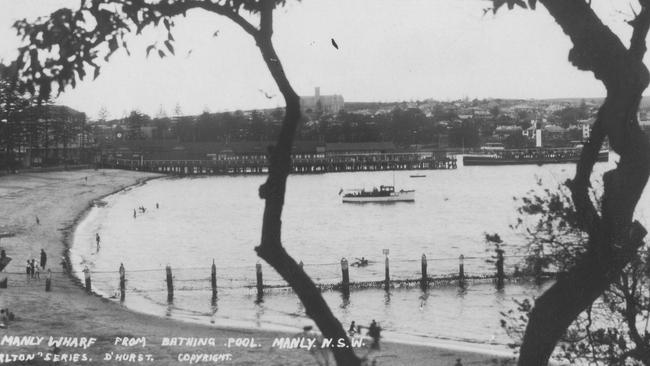
The council dithered for two years over the future of the ladies’ baths but in early 1919 the Sydney Harbour Trust called on the council to remove the ladies’ baths structure.
The council also decided to remove the old sandstone building behind the baths as it had also become unsightly.
Once the ladies’ baths had been removed, the council asked the Sydney Harbour Trust for permission to build a small swimming enclosure on the site to provide a safe bathing facility for children.
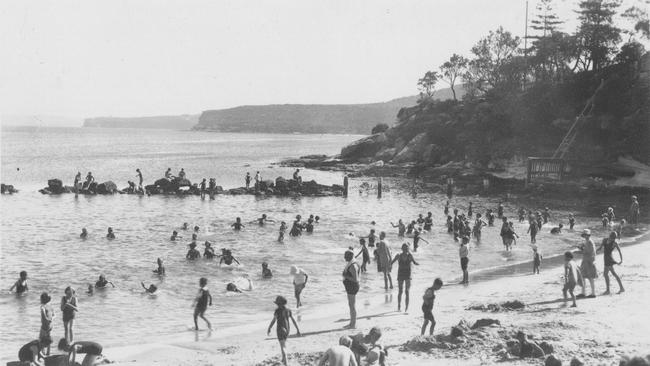
In late 1922 the council decided to build a wired shark-proof fence enclosure on the site formerly occupied by the ladies’ baths, the fence of which would be 45m long and 2.4m high at an estimated cost of £160, and in 1923 the Sydney Harbour Trust agreed to lease three roods and six perches (3186 square metres) to the council as the site for the new baths at a rental of £2 a year.
The new pool, which had a stone rubble wall on its southern side and wire fencing on its eastern side, was completed in early 1924.
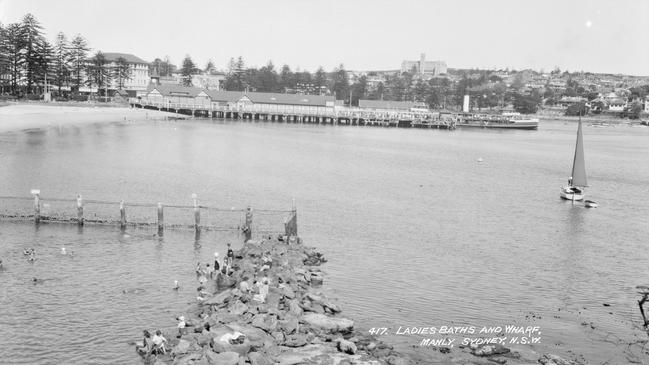
A West Esplanade Bathing Pool Committee was formed to provide advice to the council and in late 1926 it urged the council to extend the length of the pool, especially as the pool was only 1m deep at low tide, but nothing came of the suggestion.
In fact, the new pool would prove to have a short life.
In late 1931 the Port Jackson and Manly Steamship Co informed Manly Council of its plan to build a giant shark-proof pool between Manly Wharf and the western end of Manly Cove.
The proposal was met with the general approval of the council.
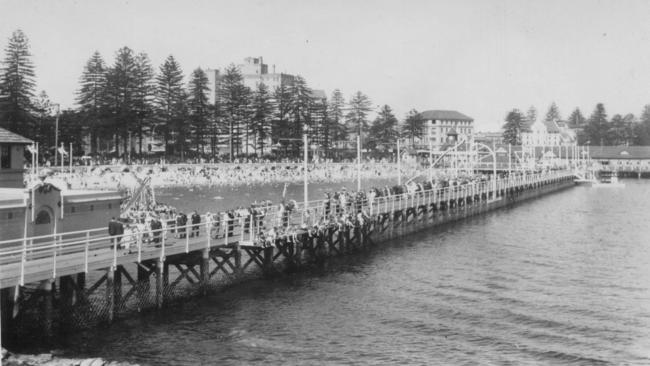
The Port Jackson company also offered to remove the existing pool at the western end of Manly Cove.
By early 1932, much of the small pool at the western end of Manly Cove had been dismantled and some of the netting was used in the construction of the swimming enclosure below Sangrado St at Seaforth.
Within months of the proposal for the giant harbour pool being tabled, any signs of the two former baths that had occupied the site were gone.


